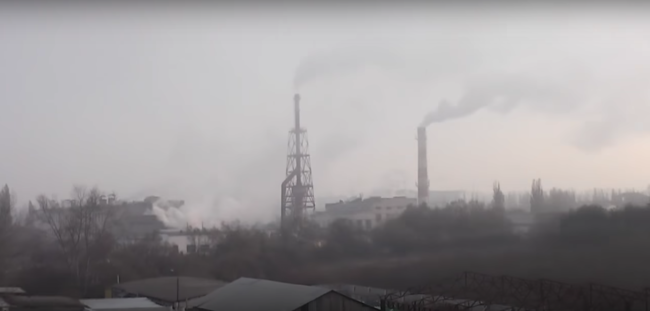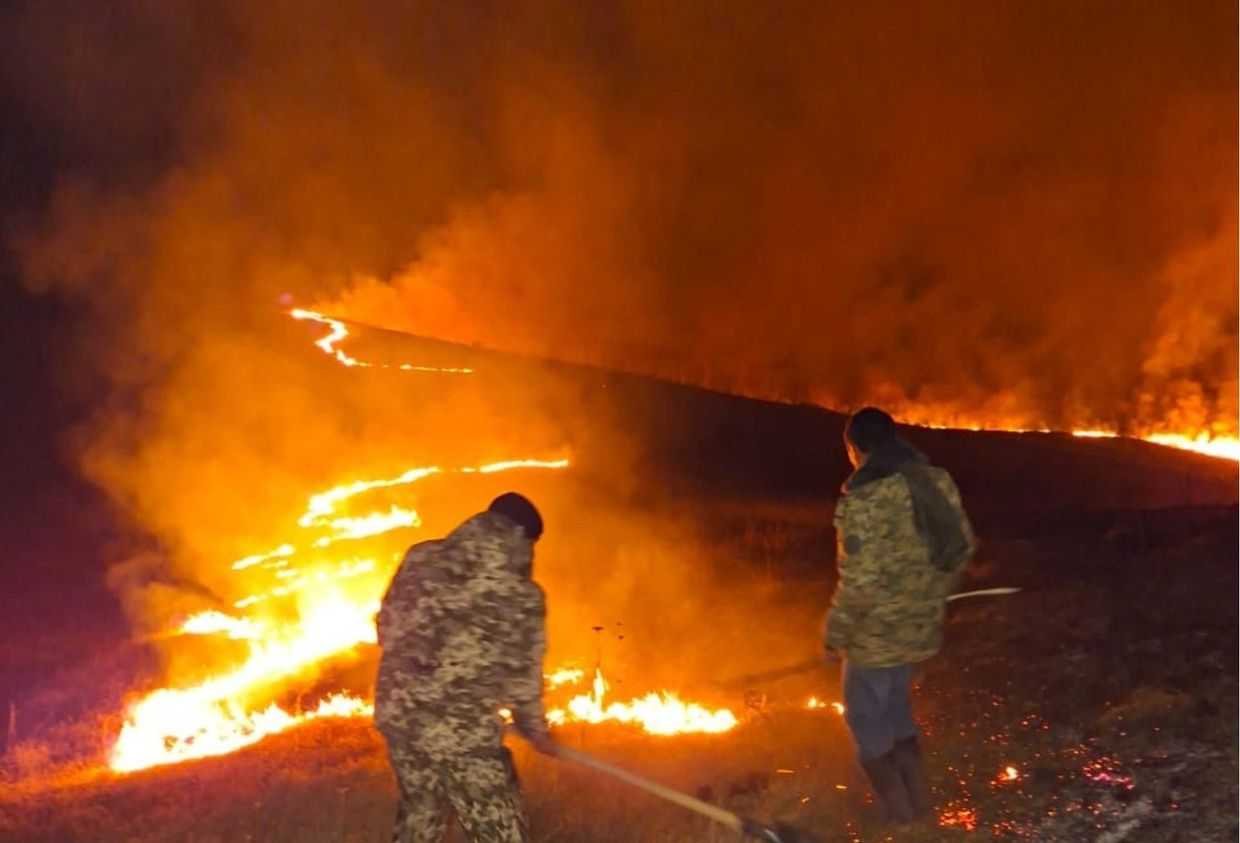‘Environmental concerns’ mask a lack of funds to reanimate Kabardino-Balkaria’s erstwhile heavy industry


 Authorities in Kabardino-Balkaria have been promoting ambitious plans to kickstart the republic’s industry with a new hydrometallurgical plant. But for ‘environmental reasons’, and supposed archaeological discoveries at the site, the plans — the estimated cost of which had began to spiral — may now be permanently on ice.
Authorities in Kabardino-Balkaria have been promoting ambitious plans to kickstart the republic’s industry with a new hydrometallurgical plant. But for ‘environmental reasons’, and supposed archaeological discoveries at the site, the plans — the estimated cost of which had began to spiral — may now be permanently on ice.
The Russian government has made claims that Western sanctions are reinvigorating the country’s industry, but several plans for the reconstruction and creation of new plants have been put on hold. One such enterprises is a mining cluster in Kabardino-Balkaria. The reason for the halt is most likely a lack of funds.
Attempts to revive heavy and extractive industries are often problematic because they bear large costs and pay off slowly. Freezing these efforts is often justified with environmental concerns, especially when such concerns are real.
The mining cluster in Kabardino-Balkaria, for example, spews hazardous materials into the atmosphere, causing indignation among residents of Kabardino-Balkaria’s nearby capital, Nalchik. Residents of other regions in the republic also object to industrial plants near their homes.
A Soviet plant
Former deputy director of the enterprise in Kabardino-Balkaria, Ruslan Tlegurov, told OC Media construction of the GMZ Hydrometallurgical Plant started in 1955 and finished in 1962, under the general system of the USSR’s Ministry of Non-Ferrous Metallurgy. Its main function was obtaining pure tungsten and molybdenum from raw materials supplied by the Tyrnyauz ore mining and processing plant (TGOK). Among other things, these metals are used in spacecraft construction.
In 1982, GMZ separated from TGOK to become an independent enterprise. After the collapse of the USSR and the introduction of a market economy, the plant signed contracts with several foreign firms, but this has not prevented its decline. Once the main supplier of raw materials to the plant, TGOK practically no longer exists, and GMZ operates on imported materials that do not fill it to full capacity.
The plant’s treatment facilities and filters were last renovated and replaced at the end of the 1970s. Within a few years of its launch, GMZ was spewing hazardous waste into the atmosphere. However, in the late 1980s to early 1990s, due to frequent downtime, the volume of harmful emissions decreased sharply. Now, the situation has once again changed.
Profit vs the environment
Russia’s leadership has taken the decision to begin import substitution, declaring their intention to revive the old economic system. After a partial renovation, in 2013 the net profit of GMZ amounted to ₽84 million ($1.4 million).
However, this came with a three-fold increase in harmful emissions as well. A two-kilometre green belt of deciduous plants once protecting residents of Nalchik from poisonous smoke, long ago disappeared. A bypass road, construction firms, and garage partnerships stand in its place now.
To answer some of these concerns, chairman of the board of directors of JSC Gidrometallurg, Igor Morozov, and the Minister of Industry and Trade of Kabardino-Balkaria, Mukhtar Gazayev, jointly adopted the ‘Investment Plan for Modernising the Production of Gidrometallurg JSC 2014–2016’. The plan involved upgraded technologies and gas cleaning systems costing almost ₽150 million ($2.6 million).
Soon after, the general director of the enterprise, Oleg Shilo, reported that environmental protection measures had been carried out and the emissions cleaning system was ready to start operating.
However, the environmental situation has not improved. The Prosecutor’s Office in Nalchik has established that the plant was emitting hydrogen sulphide and ammonia dangerous for human life and health. Expert environmentalist Abu Khatkov told OC Media that a secretive technology change was adopted at the plant to save money.
‘Hydrochloric acid in the technology was replaced with sulphuric acid without any changes in regulatory documentation on the permissible emissions. The new technology — the precipitation of molybdenum trisulphide concentrate (solution treatment with sodium sulphide) — has led to the isolation of a number of hazardous substances’, he said.
Where to move?
In view of widespread discontent with the plant in Nalchik, it was decided to launch a new enterprise in late 2018 in Kabardino-Balkaria’s Maysky District. However, local environmentalists and public figures, having learned about the plant’s toxic emissions, resolutely opposed moving hazardous production to their area.
The authorities then again changed their plans. Kabardino-Balkaria and CJSC ‘Wolfram Company’ agreed on 26 February 2015, to build a new hydrometallurgical plant with ‘innovative technologies’ in Kabardino-Balkaria’s Prokhladny District. The new plant was to be located in the village of Uchebnoye.
Sure enough, the residents of this district also strongly opposed the agreement. Especially after learning that old equipment long out of date would be installed. The fate of the plant was thus uncertain.
On 28 September 2017, at a meeting of Kabardino-Balkaria’s Government, General Director of the Kabardino-Balkaria Development Corporation, Khaziz Bekaldiyev, said that about ₽11 million ($190,000) had been spent on constructing buildings and installing equipment, and ₽170 million ($2.9 million) worth of contracts had been signed.
The press service of the North Caucasus Development Corporation JSC reported that ₽2 billion ($35 million) was required for the construction of a new plant. Officially, GMZ and TGOK are included in the mining cluster being created for import substitution, to revive the production of refractory metals.
Dragging of feet before the elections
Former deputy director of the plant, Ruslan Tlegurov, expressed the opinion that much more money would be needed to revive the industry. He said that the true number is in the range of ₽5–8 billion ($86–$140 million).
‘If we take into account the rapidly deteriorating economic situation in Kabardino-Balkaria and Russia as a whole, and the agreed 40% of the funds to be allocated for the construction of a new plant from the republic’s budget, the project seems a fantasy’, Tlegurov said.
He noted that Kabardino-Balkaria’s budget deficit was ₽510 million ($8.8 million), which further casts doubt on the government’s ability to build a new enterprise in the foreseeable future.
Tlegurov says officials from Kabardino-Balkaria’s Ministry of Industry and Trade and the leadership of GMZ are on a PR campaign to convince people that the state will pay most of the expenses. However, he explains that these statements need to be considered in the context of the pre-election campaign, which officially starts in Russia in early 2018.
Citing sources in the Russian Ministry of Industry, he adds that environmental protests and the sudden discovery of historical and cultural monuments on the construction site are an excuse to run down the clock until the elections.
This could explain the contradictions between strategic goals, which the initiators of the project announced, and the sudden obstacles, allegedly interfering with their implementation. For example, on 12 April 2017, pro-government news agency RIA Kabardino-Balkaria published an article in which acting Russian Minister for the North Caucasus Odes Baysultanov said the project was strategically important for Russia, because the country was was facing a ‘depletion of major explored deposits of wolfram’. The article also said the plant would help avoid the ‘high dependence of the country on the import of raw materials and finished products’.
But on 28 September, the same news source wrote that nine kurgans (burial mounds) were found at the construction site, and that a settlement needed to be found. Citing the general director of JSC KabBalkvolfram, Aleksey Popov, it also said a letter was sent to the chairman of the government on the need to halt the investment programme.
So what of the plant?
Almost all experts and residents of the republic interviewed who are following the situation around GMZ said it most likely would remain where it is and continue working as before.
In their turn, the authorities have given no information to the media about the future of the plant. This may be evidence of their reluctance to touch upon topics that could damage their image.
A source who for a long time worked at the Kabardino-Balkaria Office in Moscow told OC Media that the relevant ministries of Russia and Kabardino-Balkaria were really intending to re-equip the plant to increase its efficiency. However, when calculations were made, it became clear that no quick payoff was possible.
He also believes that the republic’s government began talking about environmental and other obstacles, in particular the need to study the archaeological objects allegedly found on the territory, simply to save face before the public.








